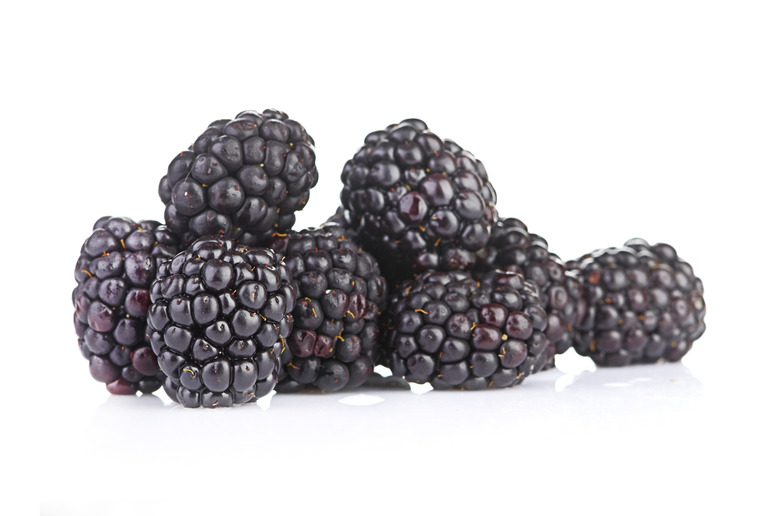Growing Marionberries
A prized member of the blackberry clan, the Marionberry (Rubus L. subgenus Rubus) is known for its superior flavor and abundantly producing thorned canes. Named after Oregon's Marion County where it was developed in the 1950s, the Marionberry grows best in U.S. Department of Agriculture plant hardiness zones 4 to 9.
A prized member of the blackberry clan, the Marionberry (Rubus L. subgenus Rubus) is known for its superior flavor and abundantly producing thorned canes. Named after Oregon's Marion County where it was developed in the 1950s, the Marionberry grows best in U.S. Department of Agriculture plant hardiness zones 4 to 9. Pick these mid-season blackberries between early July and early August.
The More Sun, the More Marions
You'll get more Marionberries per bush if you site each one in full sun. They will, however, produce some berries in partial shade. Choose a site on which you haven't grown other bramble plants or peppers, tomatoes and potatoes. If you need to improve drainage, work a 2- to 4-inch layer of compost into the top 8 inches of soil or build raised beds. A soil test kit can determine the area's pH level. Marionberries grow best at a soil pH of between 5.8 and 6.8.
- A prized member of the blackberry clan, the Marionberry (Rubus L. subgenus Rubus) is known for its superior flavor and abundantly producing thorned canes.
- They will, however, produce some berries in partial shade.
Trellis for Trailers
Marionberry plants produce fast-growing, trailing canes, so it's important to provide them with a sturdy support structure. This support not only improves berry production, but also keeps the somewhat invasive growers from taking over your garden. The plants need to be spaced 4 to 10 feet apart. For a small patch, you can ties canes to stakes placed on each side of each plant or tie the canes to an existing fence. Vigorous Marionberries grow well on a berry trellis, in which wires are strung between sturdy stakes. Use a two-wire system, in which the top wire is 5 feet off the ground and the lower one is 1.5 feet above the soil line.
Bringing up Berries
As a trailing blackberry, the Marionberry needs to be pruned and trained in a specific way. In the first growing season, tie the canes to your trellising system as they grow. In the second year, these canes will begin to produce berries, while new canes will emerge and spread along the base of the plant. Once the berry season is over, untie and cut off the bearing canes that were growing on the trellis, and lift up the new ground-dwelling canes, securing them to the fence by looping each cane around the top and bottom wires. These new canes will produce berries the following year, and the cycle will continue.
- Marionberry plants produce fast-growing, trailing canes, so it's important to provide them with a sturdy support structure.
- Once the berry season is over, untie and cut off the bearing canes that were growing on the trellis, and lift up the new ground-dwelling canes, securing them to the fence by looping each cane around the top and bottom wires.
Caring for the Canes
Keep the ground around the trellis as weed-free as possible. A 3-inch layer of bark mulch or sawdust suppresses weeds. To feed Marionberries, a 2-inch thick layer of aged manure is best applied in late fall. Spread it along the ground in front of the row of plants and work it gently into the soil. Alternatively, use a 10-20-20 fertilizer blend in the spring at a rate of 5 pounds per 100 feet of row. During periods of low rainfall, the bushes appreciate supplemental watering so that they receive about 1 inch of water each week.
References
- California Rare Fruit Growers: Berries and Small Berry-size Fruit for the San Francisco Bay Area
- Weeks Berry Nursery: Growing Blackberries in Your Home Garden
- Oregon Berries: Marionberry
- Fall Creek Farm Nursery: Cane Berry Primer
- University of California Garden Web: Growing Berries in Your Backyard
- Rodale's Ultimate Encyclopedia of Organic Gardening; Fern Marshall Bradley, et al
